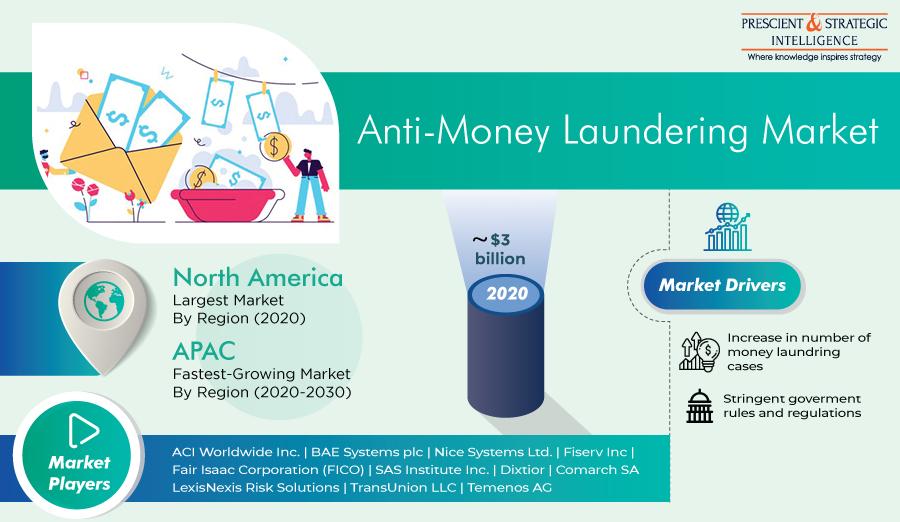According to the International Monetary Fund (IMF), money laundering refers to the processing of funds generated by criminal activity to conceal the link between them and their origins. Over the years, the IMF has intensified its anti-money laundering (AML) activities to respond to calls from the global community on reducing them. For instance, the Financial Action Task Force (FATF) works in close cooperation with the World Bank, IMF, United Nations (UN), and FATF-style regional bodies (FSRBs) to develop international standards for AML.
Thus, the surging focus of international agencies and government organizations on preventing online financial frauds and cyberattacks will drive the anti-money laundering market growth during the forecast period (2021–2030). According to P&S Intelligence, the provision of such solutions generated $3 billion revenue in 2020. Additionally, the surging use of digital payments will complement the market growth globally. Financial institutions across the world are implementing AML solutions to reduce payment frauds and money laundering, which are rising in incidence due to the increasing traffic on the internet, surging volume of digital payments, and technological developments.
Nowadays, AML solution providers are introducing new products to reach out to a greater number of customers. For example, in August 2020, Comarch SA launched a fraud detection system for corporates and small and medium-sized banks to automatically flag suspicious transactions. Similarly, in November 2020, Oracle Corporation introduced Oracle Financial Crime and Compliance Management Cloud Services for smaller financial institutions and mid-sized banks. These services help organizations in rapidly identifying abnormal customer behavior and meeting compliance requirements. The company offers these services for the full AML lifecycle.
The end user segment of the anti-money laundering market is classified into the gaming and gambling sector, banks and other financial institutions, and insurance providers. In 2020, the banks and other financial institutions category generated the highest revenue due to the surging penetration of banking and financial services, such as pension funds, commercial banking, and retail banking. Besides, the increasing advancements in digital banking technology will facilitate the growth of this category.
All these large enterprises and small- and medium-sized enterprises (SMEs) use case management, transaction screening and monitoring, regulatory reporting, and know your customer (KYC)/customer due diligence (CDD) solutions to identify potential digital frauds and mitigate money laundering cases. As per requirement, these solutions can be deployed on their own IT infrastructure or on the cloud. Moreover, to complement such software, managed and professional services are provided by AML companies.
Globally, North America accounted for the largest share in the anti-money laundering market in 2020 due to the increasing integration of advanced technologies, such as machine learning and artificial intelligence, in AML solutions and increasing internet penetration in Canada and the U.S. As per the International Telecommunication Union (ITU), 97% of the Canadian population and 89% of the U.S. populace were internet users in 2019. Additionally, the presence of a large number of market players drives the demand for AML solutions in the region.
Thus, the soaring volume of digital payments and increasing global and federal efforts toward mitigating money laundering cases will propel the need for AML solutions.


